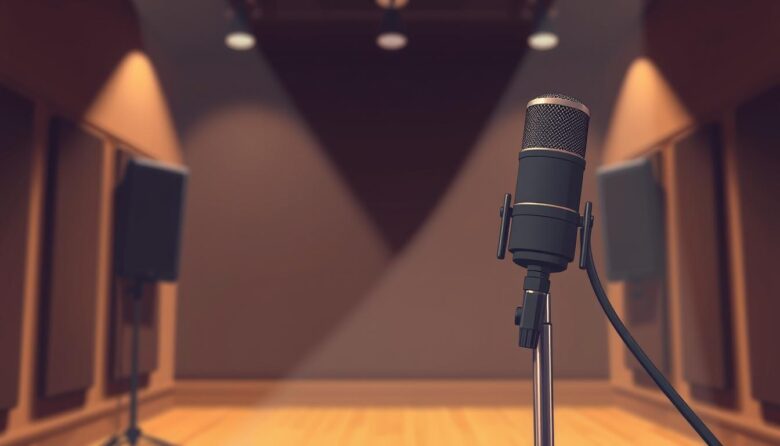Modern technology has transformed how we capture sound discreetly. Whether documenting meetings, preserving creative ideas, or gathering critical information, silent audio capture offers flexibility without drawing attention. Specialized apps now enable continuous operation even when devices sleep or switch tasks, maintaining functionality across scenarios.
Advanced tools like BSR (Background Sound Recorder) for Android work through reboots and app minimization. They only stop when manually paused, storage fills, or system limitations intervene. iPhone users benefit from AI-enhanced voice tools that process data locally, ensuring privacy while bypassing cloud dependencies.
Key challenges include balancing battery life with extended sessions and managing file sizes. Professional solutions address these through optimized compression and resource management. Unlike basic voice memo apps, they prioritize stealth and reliability over simplified interfaces.
Legal compliance remains crucial. Laws vary by state regarding consent requirements for covert capture. Always verify local regulations before implementing these methods in professional workflows or personal projects.
This guide explores technical specifications, feature comparisons, and ethical frameworks for silent audio practices. Learn how to select tools that align with your needs while maintaining operational discretion.
Understanding Silent Audio Recording Techniques
Discreet voice capture has become vital in professional and personal settings. Tools like BSR and Voice Recorder apps empower users to document interactions seamlessly while maintaining social discretion. Let’s explore why silent methods outperform traditional approaches.
Why Record Audio Silently?
Stealth recording preserves natural conversations without altering participant behavior. Journalists use it to capture unfiltered interviews, while researchers gather authentic data. Apps like BSR enable phone call recording by activating a dedicated tab and waiting mode for incoming calls.
iPhone solutions require subscriptions and carrier-supported 3-way conferencing. This method ensures continuous operation even when switching apps or locking screens. Legal professionals rely on these features for accurate deposition documentation.
Common Use Cases for Stealth Recordings
Key applications include:
– Lecture archiving for students and educators
– Quality assurance checks in customer service
– Personal voice memos during commutes or creative sessions
Unlike standard recorders, stealth tools prioritize uninterrupted capture during system updates or device reboots. Always verify local consent laws, as regulations differ across U.S. states. Ethical use balances convenience with privacy rights.
Essential Features of Top Audio Recorder Apps
High-performing recorder apps distinguish themselves through technical precision and smart design. Key elements like codec selection and storage flexibility determine their effectiveness in real-world scenarios. Let’s examine what separates premium tools from basic voice memo utilities.
Sound Quality and Codecs
AAC codecs handle diverse environments from boardrooms to field interviews, while AMR excels in phone call capture. Sampling rates matter – 48 KHz delivers studio-grade clarity but consumes more space. Lower 12 KHz settings work for casual notes.
BSR’s adjustable quality settings let users balance detail with storage limits. Transparent mode preserves subtle vocal nuances. Compression algorithms maintain fidelity even at 5.3 MB/hour data rates. Choose settings based on your priority: archival precision or extended runtime.
File Formats and Storage Options
ADTS containers prevent data loss during app crashes, ideal for critical meetings. MPEG4 files play seamlessly across devices without conversion. Cloud sync to iDrive or Google Drive enables instant access from multiple devices.
Smart file naming auto-tags recordings with timestamps and location data. Storage quotas warn before reaching capacity limits. Local storage keeps sensitive content offline, while encrypted cloud backups add redundancy. Top apps let you choose per-project storage strategies.
Background Audio Recording: Maximizing Stealth and Performance
Effective covert operations demand careful tool selection. The right combination of hardware and software ensures seamless functionality while maintaining discretion. Let’s explore how to balance technical specifications with practical needs.
Selecting the Right Device and App
Smartphones often outperform dedicated recorders due to advanced mics and OS optimization. Check battery capacity – 4000mAh+ handles 12-hour sessions. BSR hides from launcher menus, requiring a separate app for access. PIN codes add extra security layers.
Dedicated devices work better for long-term projects needing expandable storage. Compare mic sensitivity ratings – 94dB+ captures whispers clearly. Apps like Voice Recorder use minimal RAM, preserving phone performance during multitasking.
Privacy and Security Insights
Local data processing prevents cloud leaks. Voice Recorder’s AI features run entirely on-device. Encryption converts files into unreadable formats until decrypted. Always review app permissions – microphone access shouldn’t enable unnecessary data collection.
Secure deletion tools overwrite files permanently. Use VPNs when transmitting sensitive recordings. Regular app updates patch vulnerabilities that could expose stored content.
Service Directory Overview for Audio Recording Solutions
Navigating the app landscape requires understanding key differences between services. Our analysis compares top tools based on reliability, features, and real-world performance.
Comparing Leading Recorder Services
BSR remains popular despite its removal from Google Play, offering Android users extended stealth capabilities through its direct download site. iPhone’s Voice Recorder app leads in cloud integration, with users reporting clear capture up to 12 feet away. Cross-platform options like MMAC LIVE balance accessibility with advanced editing tools.
Free versions often limit recording duration or lack transcription. Premium tiers unlock AI noise reduction and multi-track editing. Subscription models vary – some charge monthly, while others offer lifetime access.
User Reviews and App Ratings
MMAC LIVE users praise its crisp output but note occasional crashes during long sessions. PrincessLeia10.3.9 highlighted its transcription accuracy, rivaling paid software like Dragon Dictation. Over 78% of Voice Recorder reviews rate it 4+ stars for reliability.
Common complaints focus on storage management in free versions. Raj Nash’s troubleshooting experience shows the importance of checking app update logs before reporting issues. Always test new recorder apps during non-critical tasks first.
Optimizing Sound Quality and Minimizing Noise
Crystal-clear audio requires strategic adjustments beyond basic settings. Professional tools like BSR and Voice Recorder offer granular controls to enhance sound quality while managing storage demands. Let’s explore how to fine-tune these parameters for different scenarios.
Adjusting Codec and Bitrate Settings
BSR’s AAC codecs provide three optimization modes. The 5.3 MB/hour setting works for casual notes, while Transparent mode preserves subtle vocal nuances at 10.5 MB/hour. Match sampling rates to your needs:
– 12 KHz: Quick voice memos
– 32 KHz: Interviews and meetings
– 48 KHz: Music or detailed analysis
Voice Recorder’s microphone settings let you choose between raw input and voice-optimized filters. Raw mode captures full environmental context, while voice presets automatically remove background noise during capture.
Techniques for Removing Background Noise
Position devices within 3 feet of speakers for optimal clarity. Avoid placing phones on vibrating surfaces or near air vents. Clothing choices matter – soft fabrics reduce rustling sounds better than stiff materials.
Use Voice Recorder’s built-in editor to remove background disturbances post-recording. Its AI tools separate voices from ambient sounds in three steps: noise profiling, frequency isolation, and dynamic reduction. For live filtering, enable the app’s real-time processing mode before starting sessions.
Advanced Options and Troubleshooting Tips
Effective management of resources ensures uninterrupted audio documentation. Professionals often face challenges balancing extended sessions with device limitations. Strategic configuration helps maintain operational efficiency while preserving critical content.
Managing Power, Storage, and Recording Limits
BSR’s intelligent settings solve power issues through battery optimization exemptions. Enable “Protected Apps” mode on Huawei and Xiaomi devices to prevent system interruptions. Set maximum folder sizes to auto-delete older files when reaching storage limits.
Divide long sessions into 4-hour segments using the “Continue Recording” option. This maintains file organization without gaps. Cloud sync tools like iDrive automatically back up recordings while freeing local storage space.
Resolving Common Recording Issues
Failed sessions often stem from Android’s power-saving features. Whitelist your recorder app in device settings to ensure background usage. Check microphone permissions after OS updates – revoked access silences recordings unexpectedly.
For distorted audio, test different codec settings and mic positions. Clear app cache monthly to prevent lag. If files disappear, search hidden system folders – some devices move data during maintenance cycles.
Always maintain 20% free storage to avoid abrupt stops. Regular device reboots refresh resources for smoother performance during multi-hour usage.
Ensuring Privacy and Secure Recording Practices
Protecting sensitive information requires robust security measures in voice documentation tools. Modern apps offer layered protection systems to safeguard content from unauthorized access while maintaining usability.
Configuring PIN-codes and App Permissions
BSR’s PIN-code feature blocks app access until correct credentials are entered. Clear app data through device settings to reset combinations if forgotten. Hide the interface from your phone’s launcher using BSR Launcher for added discretion.
Review microphone permissions regularly to prevent accidental revocations. Voice Recorder collects usage data for analytics but claims it’s anonymized. Always check app update notes for changes to privacy policy terms affecting information sharing.
Safely Uploading and Managing Audio Files
Encrypt files before cloud transfers using AES-256 standards. Services like iDrive offer zero-knowledge encryption, ensuring only you can decrypt stored content. Split large recordings into segments to simplify secure sharing.
For phone call documentation, make sure your state allows single-party consent. Label sensitive data clearly and set automatic deletion dates. Regular audits of stored files help maintain compliance with evolving privacy regulations.
Update app permissions quarterly to limit unnecessary data exposure. Combine technical safeguards with operational awareness – even the strongest encryption won’t protect poorly handled calls or misplaced login details.
Wrapping Up Your Silent Recording Journey
Mastering silent documentation requires strategic tool selection and workflow integration. Voice-focused apps like VEED and Voice Recorder simplify complex tasks through browser-based operation and instant sharing. Their 1080p video compatibility and 3D Touch shortcuts enable rapid deployment across devices.
Organize voice memos efficiently using timestamped notes and cross-platform sync. For phone documentation, record calls securely by combining encryption with single-party consent practices. Always verify local laws before implementing these solutions.
Boost productivity by pairing screen capture with video editing tools. VEED’s loop recordings and playback controls streamline content creation. Schedule app updates to maintain peak performance while preserving storage space through cloud backups.
Make sure your chosen apps align with long-term goals. Prioritize services offering scalable storage and multi-device coordination. Ethical usage remains paramount – balance technical capabilities with respect for privacy in every project.



